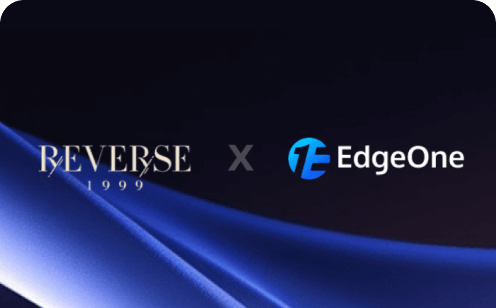Protecting Your Digital Life: 10 Essential Ways to Stay Safe Online in the Digital Age

In today's interconnected world, our digital lives have become extensions of ourselves. From banking and shopping to socializing and working, we conduct countless sensitive activities online. Unfortunately, this digital landscape is also rife with threats. Cybersecurity incidents affect millions annually, with data breaches exposing over 4.5 billion records in recent years. Phishing attacks have increased by 350% during the pandemic, and ransomware attacks occur every 11 seconds worldwide.
Web security has never been more critical as our dependence on online platforms grows. Whether you're a tech novice or a seasoned internet user, understanding how to protect yourself online is no longer optional—it's essential. This guide provides ten actionable strategies to enhance your digital security and navigate the online world with confidence.
1. Create Strong, Unique Passwords
Your passwords are the first line of defense against unauthorized access to your accounts. Yet many people still use common passwords like "123456" or "password," undermining their web security before they've even begun.
Best practices
- Create passwords that are at least 12 characters long
- Include a mix of uppercase and lowercase letters, numbers, and special characters
- Avoid personal information like birthdays or pet names
- Use a different password for each important account
Password Management
Password manager solutions like LastPass, Dashlane, or Bitwarden can generate and store complex passwords securely. These tools only require you to remember one master password, significantly boosting your web security foundation.
Aim to update your passwords every 3-6 months and immediately change any that might have been compromised in a data breach.
2. Enable Two-Factor Authentication (2FA)
Two-factor authentication adds an extra layer of security by requiring something you know (your password) and something you have (like your phone) to access accounts—a core principle of modern web security.
Essential services for 2FA
- Email accounts (Gmail, Outlook)
- Banking and financial services
- Social media platforms
- Cloud storage services
- Password managers
- Web hosting and domain management accounts
Common 2FA Methods
Common 2FA methods include SMS codes, authentication apps (Google Authenticator, Authy), push notifications, physical security keys, and biometrics. Authentication apps and security keys offer stronger protection than SMS codes, which can be vulnerable to SIM-swapping attacks.
3. Be Wary of Phishing Attempts
Phishing attacks trick you into revealing sensitive information by impersonating legitimate organizations or contacts. These represent one of the most common web security breaches affecting individuals.
Common phishing techniques
- Fake emails claiming urgent account issues
- Suspicious links that lead to fraudulent websites
- Requests for personal or financial information
- Messages containing unexpected attachments
- Fake web security alerts claiming your device is infected
Warning signs to watch for
- Grammar and spelling errors
- Generic greetings instead of your name
- Email addresses that don't match official domains
- Urgent requests demanding immediate action
- Web addresses that look similar to legitimate sites but with slight variations
If you suspect phishing, don't click any links or download attachments. Instead, contact the company directly through their official website or phone number. Report phishing attempts to your email provider and relevant organizations.
4. Keep Software and Operating Systems Updated
Software updates aren't just about new features—they often include crucial security patches that protect against vulnerabilities. Web security experts consider updates among the most effective preventive measures.
Update Essentials
- Enable automatic updates when possible for operating systems (Windows, macOS, iOS, Android)
- Keep browsers (Chrome, Firefox, Safari, Edge) updated to their latest versions to maintain web security
- Regularly update applications, especially security software
- Don't postpone critical security updates
- Apply patches for known web vulnerabilities immediately
Create a schedule to check for updates across all your devices at least monthly. Many breaches occur through web security vulnerabilities that have already been patched but not applied by users.
5. Use Secure Networks and VPNs
Public Wi-Fi networks at cafes, airports, and hotels are convenient but often insecure, making them prime targets for hackers and a significant web security risk.
Network Security Tips
- Avoid accessing sensitive accounts on public Wi-Fi
- Use a Virtual Private Network (VPN) like NordVPN, ExpressVPN, or Surfshark to encrypt your connection
- Verify network names before connecting (hackers often create similarly named networks)
- Turn off automatic connection to public networks
- Look for HTTPS-enabled sites for additional web security when browsing
At home, secure your Wi-Fi by using WPA3 encryption, changing default router passwords, and hiding your network name (SSID) from public view.
6. Install and Maintain Security Software
Comprehensive security software provides multiple layers of protection against various threats, including specialized web security features.
Security Essentials
- Antivirus/anti-malware software (Bitdefender, Norton, Malwarebytes)
- Firewall protection (both hardware and software)
- Browser security extensions (uBlock Origin, Privacy Badger, HTTPS Everywhere) for enhanced web security
- Email filtering systems
- Web application firewalls for business websites
Configure your security software to perform weekly full scans and real-time monitoring. Keep definitions updated and respond promptly to security alerts rather than dismissing them.
7. Practice Safe Browsing Habits
How you browse can significantly impact your online security posture. Implementing proper web security practices while surfing the internet is crucial for protection.
Safe Browsing Tips
- Always check for HTTPS and a padlock symbol in the address bar before entering sensitive information
- Be cautious of shortened URLs (use preview tools to see their destination)
- Download files only from trusted sources
- Use private browsing modes when using shared computers
- Consider security-focused browsers or extensions that block malicious content
- Review web security certificates when visiting new websites
- Use sandboxed browsing features for unknown sites
Remember that even legitimate websites can host malicious ads or be compromised, so maintain caution regardless of the site's reputation. Web security threats often target popular, trusted platforms precisely because users let their guard down.
8. Manage Social Media Privacy Settings
Information shared on social media can be harvested for identity theft, targeted phishing, or other malicious purposes. Social platforms are increasingly becoming entry points for web security breaches.
Privacy Recommendations
- Review privacy settings on all platforms quarterly
- Limit the personal information visible on your profiles
- Be selective about friend/connection requests
- Disable location sharing when not necessary
- Use privacy tools to see your profiles as others view them
- Carefully review third-party app permissions connected to your social accounts
Avoid sharing identifying information like your full birthdate, home address, phone number, or vacation plans. Consider using a nickname or pseudonym rather than your full legal name on public platforms to enhance your overall data security.
9. Back Up Your Data Regularly
Even with perfect security practices, data loss can occur due to ransomware, hardware failure, or account hijacking. Backups are a critical component of a comprehensive web security strategy.
The 3-2-1 Backup Strategy
- Keep at least 3 copies of important data
- Store backups on 2 different types of media
- Keep 1 backup offsite or in the cloud
Backup Options
- Cloud services (Google Drive, Dropbox, OneDrive)
- External hard drives or SSDs
- Network Attached Storage (NAS) systems
- Specialized web security backup services with encryption
Configure automatic backups to run weekly or monthly, depending on how frequently your data changes. Periodically verify that your backups work by testing file restoration, especially after significant web security updates to your systems.
10. Stay Informed About Current Threats
The cybersecurity landscape evolves constantly, with new threats emerging regularly. Web security trends and vulnerabilities change rapidly, requiring ongoing education.
Stay Updated
- Reputable cybersecurity blogs (Krebs on Security, The Hacker News)
- Government resources (US-CERT, UK's National Cyber Security Centre)
- Security newsletters and podcasts
- Your financial institutions' security alerts
- Web security bulletin boards and forums
- OWASP (Open Web Application Security Project) updates
Learn to recognize common attack patterns and be especially vigilant during major data breaches or when new web security vulnerabilities are announced.
Conclusion
Online safety isn't achieved through a single action but through a combination of good habits, appropriate tools, and ongoing vigilance. By implementing these ten strategies, you significantly reduce your risk of becoming a victim of cybercrime. Web security requires a proactive approach, as prevention is always more effective than recovery.
EdgeOne offers comprehensive web security advantages by integrating advanced security features with edge computing capabilities. It provides robust Web Protection and DDoS Protection, effectively mitigating large-scale traffic attacks to ensure service availability. The built-in Web Application Firewall (WAF) defends against common web threats like SQL injection, XSS, and CSRF, safeguarding web applications from malicious requests. Additionally, EdgeOne's intelligent traffic scheduling and edge caching mechanisms optimize content delivery while reducing latency, ensuring a seamless user experience. By combining security and acceleration in a single platform, EdgeOne simplifies management and enhances overall network resilience.
Sign up to begin your journey with us!

